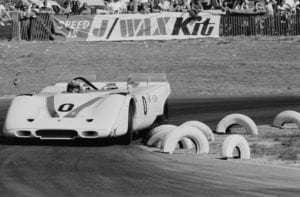Revs Institute at Rennsport

Rennsport translates as “motor racing,” and is Porsche’s celebration of its long history of doing just that: racing and winning. The German autobauer’s Rennsport Reunion VI will have the likes of 356s, 911s, Caymans, Panameras and 912s crowding the roads on California’s Monterey Peninsula. On Sept 27-30, they will funnel into WeatherTech Raceway Laguna Seca to watch everything from 356s to turbo 917 Can-Am cars to RS Spyders race in events with names like the Gmund Cup and the Weissach Cup. Paying homage to an important product of Porsche’s past, there will be a competition for Porsche tractors, complete with a Le Mans start. Giddy up.
In addition to the racing, Porsche is organizing a Heritage Display of significant Porsches that will rival their museum in Germany. There is a chance to say hello to and get autographs from the likes of Vic Elford, Brian Redman, Patrick Long, Timo Bernhard … and there can’t be a Porsche race gathering without Hurley Haywood.
Naturally, there will also be — outside the paddock — beer and pretzels
As early pre-turbocharged Porsche race cars are a focus of the Miles Collier Collections, Rennsport is a once-every-three-years opportunity to present a critical mass of the Porsche collection outside its usual home at Revs Institute in Naples, Florida. This year, the Miles Collier Collections at Revs Institute will bring seven of the automaker’s racing best to Laguna Seca. Here is a preview of what will be in attendance in the Heritage Display (the 908/02 is also scheduled to race):
1960 Porsche RS-60 Spyder, serial number 718-041. Porsche’s RS-60 is a member of the automaker’s famed 718 family of race cars that were a continuation of the successful 550 design: small, lightweight and mid-engined. They were known as “giant killers” for their ability to win against Ferraris. Revs’ RS-60 is remembered for winning Sicily’s 1960 Targa Florio on the tortuous 44.64-mile Circuito Piccolo delle Madonie. The victorious drivers were Hans Herrmann and Jo Bonnier. The car also finished second at the Nürburgring, this time with Bonnier and Olivier Gendebien. The following year at the ‘Ring, Stirling Moss drove it in one of his famed races in the rain … until the engine blew on lap 22. Flat-four air-cooled engine, mounted midship, twin overhead camshafts, 1,697 cc, 170 hp at 7,800 rpm. Wheelbase: 86 inches. Weight: 1,280 pounds.



1967 911R, serial number 11899005R. This might look like a normal 911, but it’s a rare bird, one of 23. Porsche R&D guru Ferdinand Piëch was a fanatic about lightweight, and the 911R is a representative example. It retains a steel unibody, but the body shell is all fiberglass. Engineers drilled holes throughout to lighten the chassis, and even the taillights and front turn signals were made from different stock to save weight. In went a Carrera 6 engine with wide wheels at the corners. Porsche told the FIA this was a 911S variant meant to race in GT classes. Nice try. Authorities said no. Porsche would have to build 500 911Rs for it to be homologated. Marketing said they could never sell that many, and the project was over. But not without some glory. This 911R from the Miles Collier Collections, driven by Gérard Larrousse and Maurice Gelin, won the 1969 Tour de France and Tour of Corsica. Flat-six air-cooled engine, rear mounted, single overhead camshaft, 1,991 cc, 210 hp at 8,000 rpm. Wheelbase: 87 inches. Weight: 1,810 pounds.



1967 Porsche 910/6, serial number 910-007. First, the apparent misnomer: 910. Why does it predate the 907? This car was a development of Porsche’s 906. The factory named it the 906/10, which morphed into 910. A major difference between the 906 and 910 were the use of 13-inch wheels and tires with a center wheel nut rather than the 906’s 15-inch wheels with five lug nuts, all the better for quick pit stops. The car benefited from further aerodynamic development and, typical of R&D chief Ferdinand Piëch, still more lightening. The 910s raced with either of two engines: a 1,991-cc flat-6 or 2,196-cc flat-8. Three of each configuration were entered in the 1967 1,000-km race at Germany’s Nürburgring. Only one flat-8 finished, but the flat-6 versions were 1-2-3, the winner being serial number 910-007, now part of the Miles Collier Collections. The drivers were American Joe Buzzetta and German Udo Schütz. It was a dramatic win for this 910, bringing Porsche its initial international, overall win at the ‘Ring. Flat-six air-cooled engine, mounted midship, single overhead camshaft, fuel injected, 1,991 cc, 220 hp at 8,000 rpm. Wheelbase: 90 inches. Weight: 1,320 pounds.
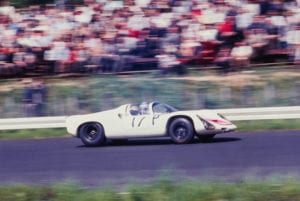


1968 907, serial number 907-024. Forget the confusing Porsche numbering system, but the 907 post-dates the 910 from 1967 and inherited an important element of that car, the 2,196-cc flat-8 engine. Aerodynamics of the 910 were refined for the 907. The driver was moved to the right side of the cockpit to allow for right-turn race tracks, and had a NASA-developed cool suit to combat the cockpit heat. Porsche started 1968 with a 1-2-3 Daytona sweep with long-tail 907s, and at Sebring’s 12-hour race, took the top two places with short-tail versions. The winning car was 907-024, which now makes the Miles Collier Collections at Revs Institute its home. After its Florida win, the car was raced by a privateer, and then sent to Franco Sbarro to be reworked as a road-licensed street machine. When the Collier Collections obtained the car, it had to go through thousands of hours of handwork to painstakingly bring it back to its current condition, just as it was when it took the checkered flag at Sebring in 1968. Flat-eight air-cooled engine, mounted midship, twin overhead camshafts, fuel injected, 2,196 cc, 278 hp at 8,700 rpm. Wheelbase: 90.6 inches. Weight: 1,320 pounds.



1969 908/02, serial number 908/02-016. Author’s note: Just back from Vietnam in the summer of 1969, Car and Driver sent me to Watkins Glen to photograph the 6 Hours and Can-Am races. What a return to racing. McLarens, Matras MS650s, Mirage M3, Ford GT40s, and plenty of Porsches. That includes one very special 908/2: serial number 016, winner of the 6 Hours and now in the Miles Collier Collections. Just three 908/02s were entered for the Glen’s endure, and they finished 1-2-3, Jo Siffert and Brian Redman winning. While 908s debuted in 1968 as coupes, for 1969 Porsche trimmed off the top, cut 220 pounds and sported — as of the Nürburgring 1,000-km — an aerodynamic spyder body nicknamed Flunder (Flounder). Out back was the 350-horsepower, 2,997-cc flat-8. Porsche’s 908s would win 6 of the 10 World Sports Car Championship events and help bring the German automaker that year’s title. 016 always makes me smile when I see it at Revs. Flat-eight air-cooled engine, mounted midship, twin overhead camshafts, fuel injected, 2,997 cc, 350 hp at 8,400 rpm. Wheelbase: 90 inches. Weight: 1,323 pounds.

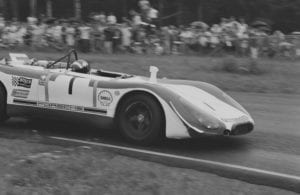
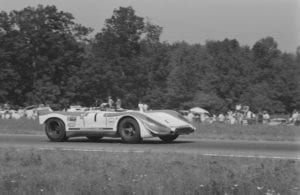
1969 908 LH, serial number 908-025. Of the many Porsches in the Miles Collier Collections at Revs Institute, the 908 LH is a favorite for visitors and those who see it racing. That oh-so-long-tail coupe bodywork is mesmerizing. While 908s were slow in maturing during 1968, they were a major force in 1969 as the 917 also took time to develop. The 908s helped Porsche win that year’s International Championship for Makes. This is the most successful of the 908 LHs (Langheck, or Long Tail), winning at Spa and taking 2nd at Monza. No easy task for the drivers. Beautiful as it is, the 908 LH could be a handful to race, weaving back and forth on the road at 200 mph. Brian Redman wrestled this machine to a new Spa lap record of 145.28 mph and declared, “It scared me stupid.” Flat-eight air-cooled engine, mounted midship, twin overhead camshafts, fuel-injected, 2,997 cc, 350 hp at 8,400 rpm. Wheelbase: 90 inches. Weight: 1,350 pounds.
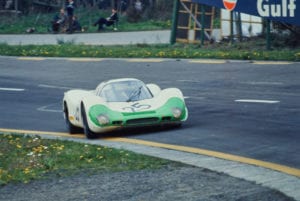

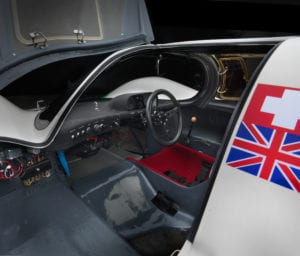
1969 917 PA, serial number 917-028. In 1969, Porsche was involved in international racing with its 917, but another series tempted: North America’s Can-Am. The U.S. was an important market for Volkswagen’s Porsche+Audi division (hence the PA). Work began after Le Mans in June 1969 on this 917 variant, the coupe body swapped for an open version similar to the 908/2 Flunder. First raced midseason in 1969, the 917 PA gave away 3 liters of engine displacement, 250 horsepower and 200 pounds of extra weight compared to the McLarens. Still, the PA proved quick … and an inspiration. From it came the 917/10 and 917/30 Can-Am machines. McLaren was titleholder in 1970 and 1971, but in 1972, Porsche 917/10s were 1-2-4 in the championship. Come 1973, Mark Donohue won six of the eight rounds with the 917/30. Through it all, this 917 PA was raced, upgraded to 917/10 specs and competed in more Can-Am races than any other Group 7 car. The car will be shown at Rennsport for the first time since its lengthy restoration back to its original 1969 configuration. Flat-twelve air-cooled engine, mounted midship, twin overhead camshafts, fuel injected, 4,494 cc, 580 hp at 8,400 rpm. Wheelbase: 91 inches. Weight: 1,710 pounds.
